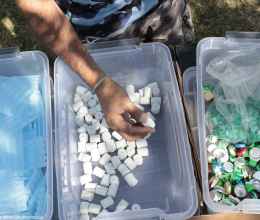
This commentary was originally published in Colorado Politics.
A thirteen-year-old child lashes out against another student, triggered by lingering and untreated trauma. The police are summoned. Cold, heavy metal handcuffs are squeezed tight around impossibly tiny wrists. The child is separated from her family. She is whisked away to a detention cell.
The empty cell has a plastic stool bolted to the floor. A desk bolted to the wall. A small bunk. She waits in that cell alone, for weeks or months, waiting for authorities to determine what the government’s response will be.
Talk to anyone who has had contact with Colorado’s juvenile justice system — families, caregivers, survivors, law enforcement, advocates, conservatives, progressives — and you’ll hear a common refrain: the current approach is not working.
Fortunately, a bipartisan group of Colorado lawmakers, led by Rep. Lindsey Daugherty, has been hard at work for years on this urgent problem. Republican and Democratic legislators have been collaborating with state agencies and advocates to make common-sense reforms that have begun the slow and careful work of making our system safer for kids, families, and communities.
One of these recent public safety measures includes a 2021 law limiting the total number of children that the government can hold in detention cells before a child has been found guilty of any wrongdoing — known as “pretrial detention.”
This statewide limit was set after thoughtful evaluation of data forecasts, and that limit will help ensure a child is incarcerated only when serious violence is at issue.
This new approach was a major step forward for public safety. Studies show pretrial detention of children increases future felony crimes by a whopping 33%. In other words, every young child we can keep in the community is a success for that child, and a success for reducing crime.
Here’s more good news: these reforms are working. Since 2012, the crime rate for young people has dropped by 36%. More and more young people are receiving services and interventions that are far safer and more effective than putting children in cells. These services address the child’s underlying reasons for their actions, and do far more to foster lasting behavioral change than an empty cell and handcuffs ever could.
For the children we continue to incarcerate pre-trial, the percentage of kids held for non-violent acts has been steadily decreasing — a promising sign that we are finally focusing our attention on the hardest-to-solve cases.
These solutions hold huge potential for improving safety and keeping families together. For example, some essential parts of the 2021 law began being implemented only two months ago.
But there’s an unexpected threat to the long overdue progress just getting underway: the pandemic crime bump.
Research has long identified the most significant causes of violence and crime: housing insecurity, homelessness, poverty, substance misuse, family dissolution, unmet mental health needs, and social isolation. The pandemic threw gasoline on all these fires, and all at once.
Given this unprecedented societal stress, it is no surprise at all that after decades of steady declines, we are now seeing a short-term rise in some crimes committed by kids. It is also true that a decade from now, this recent pandemic-driven rise will be an aberration in an otherwise steady decline.
But right now, these upticks are causing legitimate concern for elected officials and agencies who are charged with the very hard work of transforming our juvenile justice system, and who are on the front lines working directly with impacted families.
Fortunately, the post-pandemic bump does not require us to abandon the goal of reducing the number of children separated from their families and creating safer communities. The system has built-in flexibility to accommodate the natural ebb-and-flow of justice systems. Agencies, stakeholders, and elected officials are coming together to identify solutions that can solve these short-term problems while staying laser-focused on our long-term goals.
We do not have to heed the voices of people who have long opposed any changes to our juvenile justice system. They are all too ready to misrepresent the data and rely on tired tropes and scare tactics that are a shameful homage to the racist “super predator” messaging of the 1990s.
Instead, we can work together to identify solutions that won’t undo the bipartisan, evidence-based, and long-term approach that makes kids, families, and communities safer. If we do anything less, it will be kids and our communities who will pay the price.
